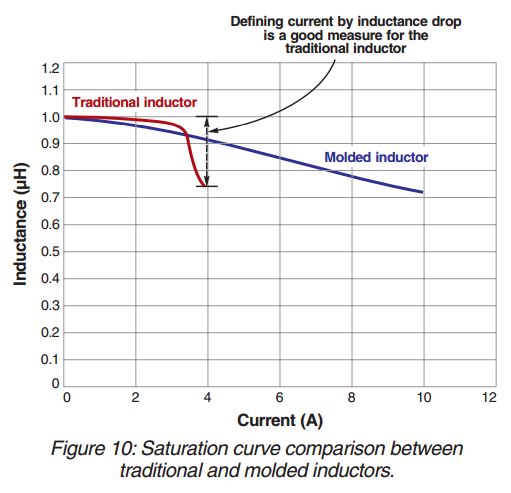
Design requirements often focus on steady-state performance and operating conditions. Component sizing and ratings selection, if based solely on meeting these objectives, can lead to unexpected and sometimes catastrophic results. Parts may be most severely stressed during transients that occur infrequently, perhaps only once during the initial start-up!
Because they are infrequent, designers may spend less time thinking about transient conditions. After all, the marketable product features are the “normal operation” characteristics, such as being more “Green” (i.e. higher efficiency) or having better performance (e.g. faster, more accurate, lower noise, etc.). These design goals can overshadow the behavior during transient conditions, such as start-up, turn-off or load switching. But, infrequent does not mean “unlikely;” these conditions will happen!
Over-currents (or “spikes”) can occur during the start-up transient of a DC-to-DC power converter--not the expected current maximum that occurs during the initial overshoot, but the sharp increase in the inductor current ramping due to inductance “collapse.” This inductance drop occurs when the “expected” current overshoot exceeds the saturation point of the inductor’s magnetic core.
Coilcraft has provided an excellent article about the behavior of inductors and tools they provide to specify and compare performance among parts: http://www.coilcraft.com/pdfs/Doc1140_Beyond_the_data_sheet_Part1.pdf The image below is taken from that document. It shows Inductance vs. Current, and compares a traditional inductor (i.e. a coil wound around a ferrite core) vs. a “molded” or “soft-saturation” inductor (i.e. a core that is molded around the winding).
To demonstrate the implications of these “static” L vs. I curves in a dynamic or transient application, a comparison circuit was created. The circuit below shows is a simulation of the start-up transient for two nearly identical open-loop buck power stages (12V -> 3V). The only difference is that the top circuit uses an inductor model calibrated to a Coilcraft XAL6060-223 (22uH), which has "soft saturation" behavior. The bottom circuit uses a similarly sized inductor, a Coilcraft MSS1260-223, which has a more typical "hard saturation" characteristic.
The load resistor is 1 Ohm, so the nominal load current is 3 Amp. Both inductors work well for that steady-state operating condition. But during the turn-on transient, the current goes well above that nominal level, as the 110 uF output capacitor charges up. Notice in the top-center waveform plot that the inductor current reaches a peak of just over 7 Amps, whereas the bottom-center waveform plot shows the corresponding peak current exceeds 11 Amps in the traditional inductor! This may cause stress in the MOSFET and diode, which must switch this excessive current.
Note: This schematic is a “Live-Tunable” design, you can pan and zoom (like Google Maps), and you can move the waveform probes around and look at signals on any of the nets (i.e. “wires”) or within any of the components. You can also double click on components to see their parameter values. For the components highlighted in blue, you can change their parameter values and run a new simulation to see the effect of those changes. If you click the "Edit in PartQuest Explore" button, you'll be able to freely change any aspect of the design (e.g. delete or add new components) and re-simulate your own copy of this circuit.
The waveform plots on the left show the instantaneous inductance value of the inductor components. Note that the inductance of the traditional “hard-saturation” inductor collapses during the current overshoot, to just over 2 uH, or approximately 10% of its nominal value! The implication of the “inductance cliff” for the traditional inductor, shown in Figure 10, is this dynamic inductance collapse that results in the observed current spikes.
Note also that the actual inductance minimum for the soft-saturation inductor is approximately 14 uH. It maintains over 60% of its nominal inductance value throughout the current overshoot transient, and continues performing its primary function in the circuit.
While PartQuest Explore can certainly be used to simulate a circuit or system during normal operation and analyze its steady-state characteristics, the ability to predict behavior during transients can be even more valuable, because these aspects are generally outside the scope of standard design rules and analysis methods.
The author would like to thank Chris Hare of Coilcraft for his contribution not only to this article, but also for the soft-saturation models that are now included in the PartQuest Explore open-source library.
- 709 views

